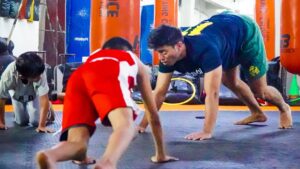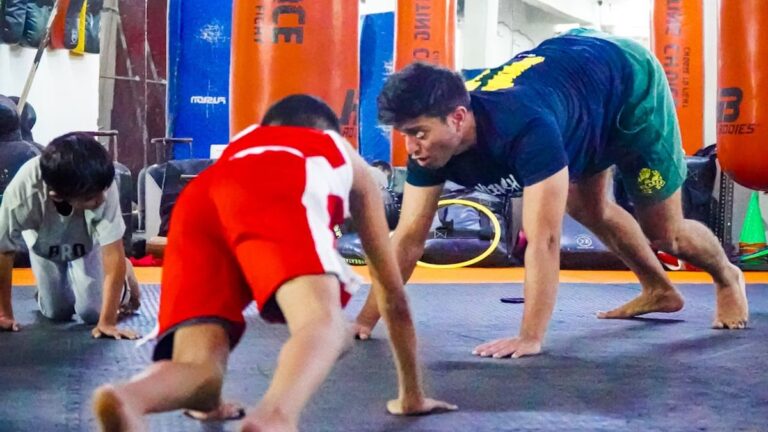Unleashing Potential Through Movement: The Transformative Power of Sports in Everyday Life
It’s fascinating how something as simple as a kick of a ball or the rhythm of a running stride can ripple through our lives, unleashing potential we might not even know we possess. Sports have a way of infiltrating our day-to-day existence, transforming not just our bodies but also our minds, emotions, and relationships. When I think back to my childhood, the joy of playing soccer in the park—shoes often mismatched and laughter echoing—feels like a world away, yet the lessons learned during those carefree days still resonate today.
The Physical Dimension: More Than Just Exercise
At its core, sports provide an avenue for physical activity, which is crucial for maintaining a healthy lifestyle. But let’s be real: it’s not just about burning calories or building muscle. Engaging in sports can significantly improve cardiovascular health, enhance flexibility, and boost overall endurance. According to some studies, regular physical activity can reduce the risk of chronic diseases like heart disease and diabetes. But the benefits extend beyond just the physical.
Take a moment to think about how you feel after a good workout. Endorphins—those delightful little hormones—flood your system, making the day seem just a bit brighter. It’s almost like a natural high, isn’t it? And while we often think of athletes as the ones reaping these rewards, the truth is that anyone who participates in sports at any level can experience this transformation. Even the weekend warriors, who might only lace up their running shoes once in a while, find themselves rejuvenated after a good sprint.
The Emotional Boost: Sports as a Mental Health Ally
Now, let’s pivot to another vital aspect: emotional health. Sports can be a powerful antidote to stress and anxiety. I remember a particularly challenging week at work—everything seemed to be going wrong. But after one intense basketball game with friends, I felt renewed, as if I’d hit the reset button on my mental state. This isn’t just coincidence; it’s backed by science!
Stress Reduction and Mood Enhancement
Research indicates that physical activity releases neurotransmitters that can help alleviate symptoms of depression and anxiety. The act of moving our bodies also encourages mindfulness; when you’re on the field, your focus is entirely on the game, leaving little room for worries about deadlines or bills. The joy of scoring a goal or making that perfect pass can create a euphoric sense of achievement that translates into other areas of life.
Building Connections: The Social Aspect of Sports
One of the most underrated benefits of sports is the community it fosters. Whether it’s through team sports or local running clubs, the connections formed through shared experiences can be profound. I often chuckle when I think about the time I signed up for a local tennis league, thinking it would be a solo endeavor. Little did I know, I’d be making lifelong friends and often finding a shoulder to lean on—sometimes literally, after a particularly grueling match.
Teamwork and Collaboration
In team sports, collaboration is key. You learn to work with others, to strategize, and to celebrate collective victories. This camaraderie can extend beyond the playing field and into the workplace or personal life. After all, the skills learned during a heated game of volleyball can just as easily apply to a project at work where teamwork is essential.
Life Lessons from the Field
Sports are a microcosm of life itself. The lessons learned on the field—resilience, perseverance, and the importance of practice—are invaluable. I vividly recall my high school track days, where I stumbled through countless races, often finishing last. Yet, each failure taught me something new about determination. The grit it takes to keep training, to push through fatigue, and to ultimately improve is a lesson that echoes throughout life’s many challenges.
Resilience and Overcoming Obstacles
Every athlete faces setbacks—injuries, losses, and sometimes, the crushing weight of self-doubt. Learning to overcome these hurdles, however, can be transformative. A mentor once told me, “It’s not about how hard you fall but how quickly you get back up.” This mantra has stuck with me and shaped my approach not only in sports but also in personal and professional endeavors.
Movement as a Form of Self-Expression
Sports also provide a unique platform for self-expression. The fluidity of a dancer’s movements, the artistry of a gymnast’s routine, or the fierce determination of a martial artist can convey emotions in ways that words sometimes cannot. I remember watching a friend perform at a local dance competition; the way she moved told a story of passion, struggle, and triumph. It was mesmerizing.
The Creative Side of Athleticism
Many might not consider sports as an art form, but the creativity involved in athletic performance is undeniable. Each athlete brings their personality to their sport, whether it’s through the style of play, the choice of moves, or the emotions displayed. This personal touch can inspire others, creating a ripple effect that encourages more people to move and express themselves through sports.
Incorporating Movement into Daily Life
So how can we tap into this transformative power of sports in our everyday lives? It starts with a mindset shift. Movement doesn’t have to mean hitting the gym for two hours every day. It can be as simple as incorporating active breaks into your routine. Here are some ideas to consider:
- Take the stairs instead of the elevator.
- Walk or bike to work if possible.
- Join a local sports league or club—even if you’re a beginner.
- Engage in family activities that promote movement, like hiking or playing catch.
- Try out new classes—be it dance, yoga, or martial arts.
Even small changes can lead to significant improvements in overall well-being. The goal is to find what resonates with you—what makes you excited to move?
Finding Your Passion: The Journey of Exploration
Finding the right sport or physical activity can feel like searching for a needle in a haystack. I’ve dabbled in everything from swimming to karate, sometimes with more enthusiasm than talent (let’s just say my black belt dreams are still a work in progress). The key is to embrace the journey of exploration. Allow yourself the freedom to try different things, to fail, and to laugh at the occasional mishap.
The Importance of Enjoyment
Ultimately, the most important aspect of incorporating movement into your life is enjoyment. If you dread running on a treadmill, why not try Zumba instead? The world is filled with diverse activities waiting to be explored, and discovering what you love can be a game-changer. When movement is a source of joy rather than a chore, it becomes a natural part of your life.
The Role of Technology in Sports
In today’s digital world, technology has transformed the way we engage with sports. From fitness trackers to virtual classes, the options are endless. I’ve found apps that coach me through workouts, encourage friendly competition, and even remind me to stretch (thank you, smart watch!).
Staying Connected
These tools can help keep us motivated and connected to a community of like-minded individuals. Online forums, social media groups, and virtual challenges can provide support and encouragement, making it easier to stay on track and share successes. Plus, let’s face it: who doesn’t enjoy a bit of friendly competition now and then?
Embracing the Journey
As we journey through life, let’s remember that sports are not just an isolated activity reserved for the young or the elite. They are a universal language that transcends age, culture, and background. The transformative power of movement can enrich our daily lives in countless ways. So whether you’re a seasoned athlete or someone just starting out, don’t underestimate the potential that lies within you.
Creating a Culture of Movement
Moreover, embracing this culture of movement can lead to societal change. Imagine communities that prioritize active lifestyles, where children grow up playing outside instead of glued to screens. As individuals, we can contribute to this vision by advocating for local sports programs, supporting active initiatives, and simply leading by example. It’s about creating a ripple effect that encourages others to join the movement.
Conclusion: A Call to Action
In conclusion, the transformative power of sports in our everyday lives is undeniable. From physical and emotional benefits to fostering social connections and life lessons, movement is a key to unlocking our potential. So, lace up those sneakers, grab a friend, or join a local team. Let’s unleash our potential through movement and make sports an integral part of our lives. After all, as the saying goes, “You miss 100% of the shots you don’t take.” So, go on, take your shot!
Now, if you’ll excuse me, I have a date with my running shoes—who knows what adventures await on the trail today?












